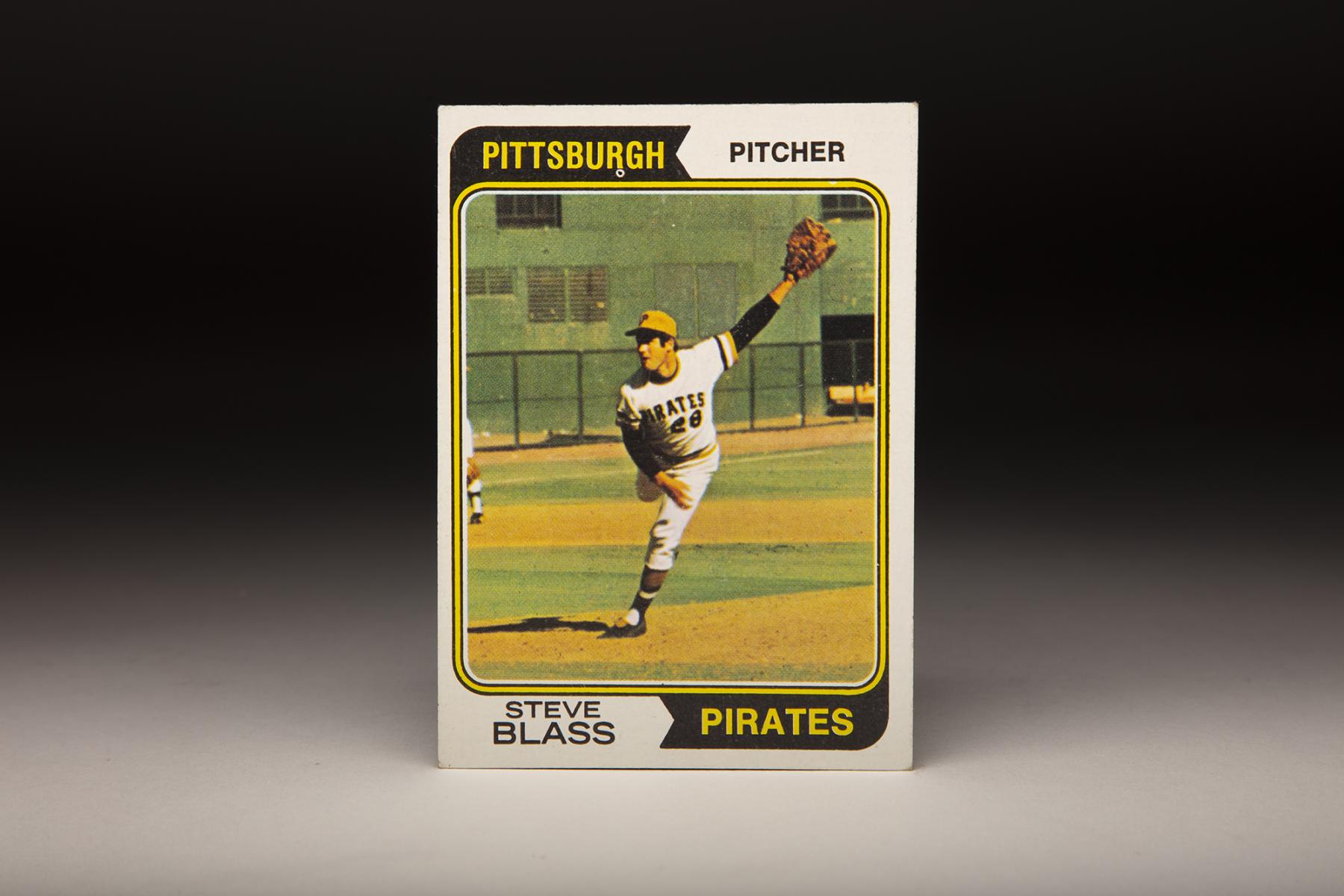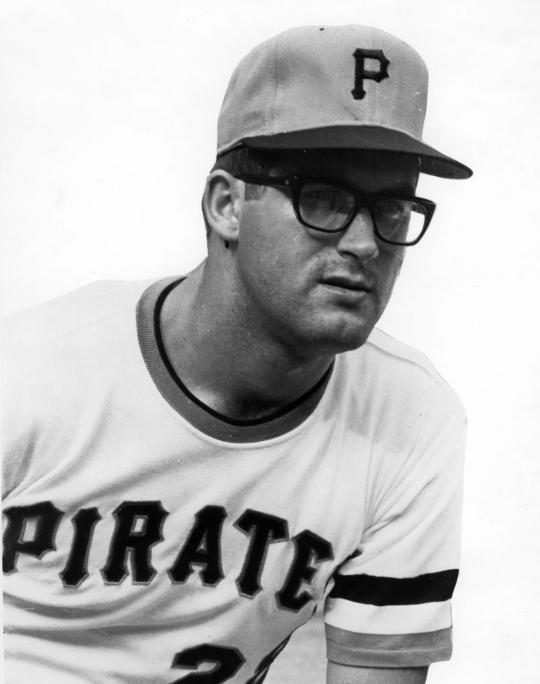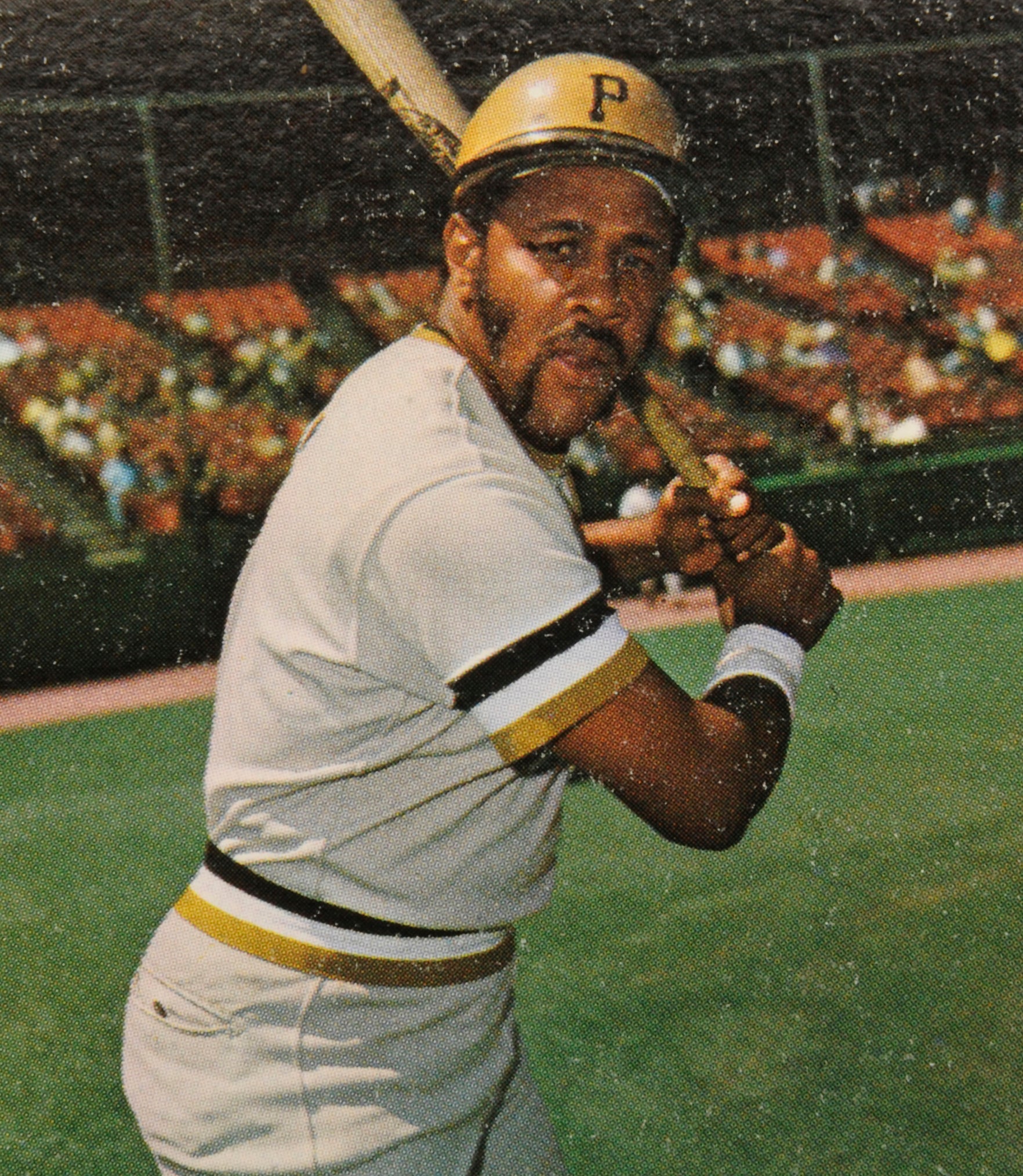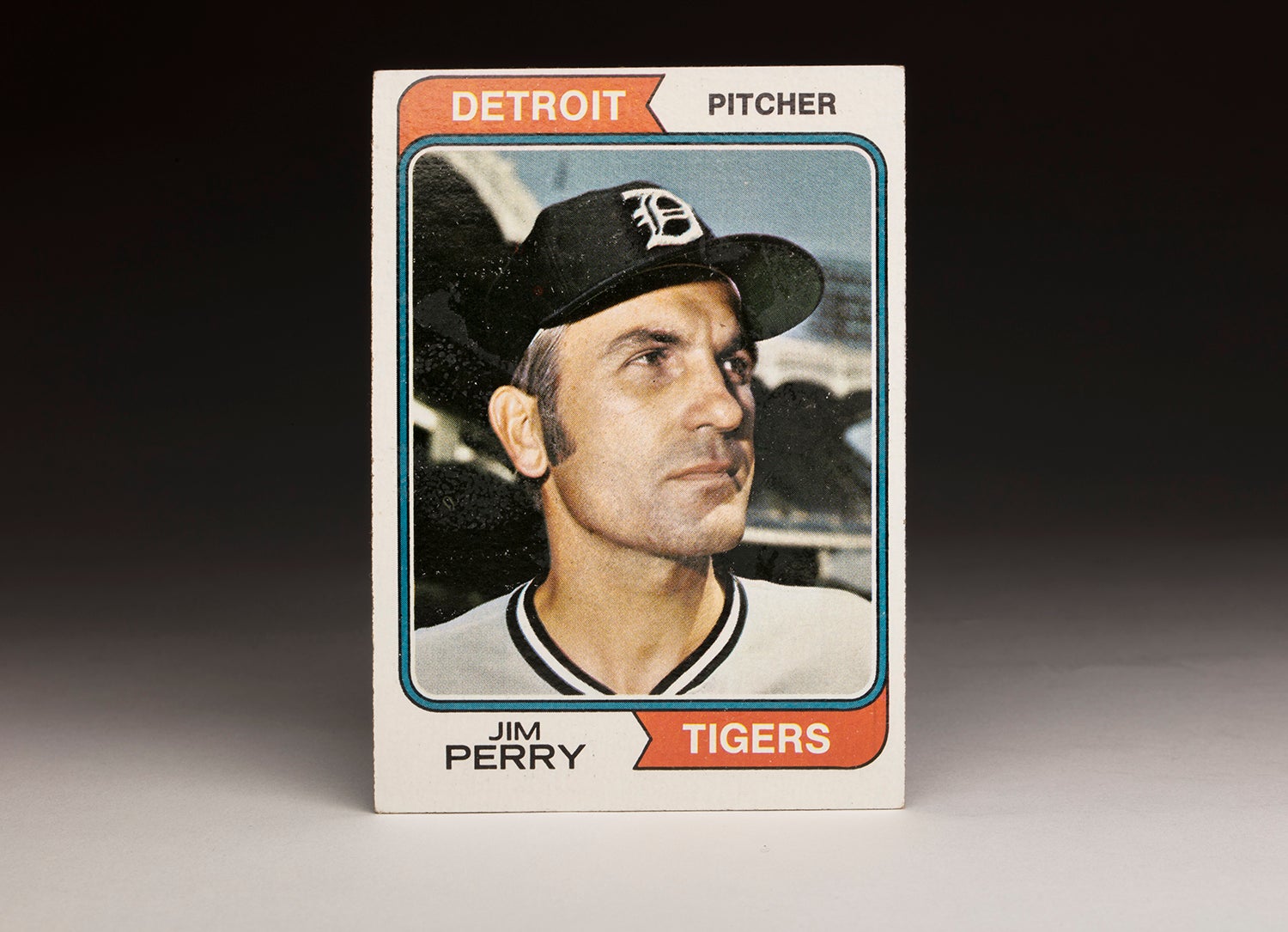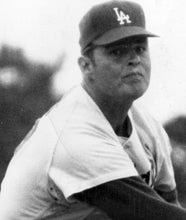- Home
- Our Stories
- #CardCorner: 1974 Topps Steve Blass
#CardCorner: 1974 Topps Steve Blass
Hall of Fame staffers are also baseball fans and love to share their stories. Here is a fan's perspective from Cooperstown.
In 1974, Steve Blass appeared on a Topps card for the final time in his career. It also happens to be the only time that Topps captured him in action (other than a 1972 World Series card).
Official Hall of Fame Apparel
Proceeds from online store purchases help support our mission to preserve baseball history. Thank you!
There’s some irony here, because Blass didn’t see much action at all in 1974. He appeared in a grand total of one game for the Pittsburgh Pirates. No longer able to throw strikes, in what remains one of the sport’s great mysteries, Blass was essentially forced to retire from a game in which he had excelled for most of his professional career.
The Blass card is one of my favorites in the 1974 Topps set. Not only is it an action shot, but it has an element of poetry, the way that Blass is balanced on one leg near the end of his full-force, old-school delivery. Blass’ left leg is completely extended, all of his weight shifted onto it, as he simultaneously raises his left arm into the air. I’m not certain if this is good pitching form or not, but it sure does look elegant and graceful; his left arm and left leg are so much in synch that you can practically draw a straight line from his the leg to the arm. It’s almost as if Blass is doing a pirouette, something we might associate more with an accomplished figure skater than we would a pitcher.
The card also contains a certain feeling of emptiness. Other than the left leg of the third baseman (which might be Richie Hebner, or his backup Fernando Gonzalez), we see no one else in the photograph with Blass. None of the other fielders, not even the shortstop or the left fielder, are visible. Similarly, there is no one apparent in the Three Rivers Stadium bullpen located beyond the outfield fence, and the angle of the photograph prevents us from seeing the outfield bleachers or the fans sitting in those stands.
I imagine this is how Blass must have felt in the latter days of his career, alone and solitary on the mound, unable to find a way to throw a ball within the confines of the strike zone.
Yet, there is much more to the Blass story than the struggles he encountered in 1973 and ’74. Blass’ career featured numerous triumphs, which began to occur shortly after he signed with the Pirates in 1960.
At first, Blass considered signing with the Cleveland Indians, who offered him a bonus of $2,500 but wanted him to wait until 1961 before beginning his pro career. The Pirates topped that number by offering him $4,000 and a chance to start pitching in the minor leagues right away. In 1961, he settled down at Batavia of the NY-Penn League, winning 13 of 19 decisions and putting up an ERA that was a run and a half better than the league average.
As a rookie in pro ball, Blass pitched well in the Appalachian League, but struggled badly when moved up to the Midwest League in midseason.
In 1962, the Pirates moved Blass up to Kinston of the Class B Carolina League, where he dominated the competition, but he then faltered after being called up to Class A ball.
In 1963, he earned his first promotion to Triple-A, pitching acceptably for the Pirates’ affiliate in Columbus, Ohio.
He made two more starts for the Triple-A Jets in 1964, before finally earning his first promotion to the major leagues.
The Pirates used Blass as a starter and reliever the second half of 1964. In his first big league start, he faced future Hall of Famer Don Drysdale. He outdueled the legendary right-hander, winning a complete game, 4-2 decision.
“What I remember about the game was [that] Leo Durocher was their third base coach at the time,” Blass told sportswriter Bob Hurte, “and he was screaming at me, using language that I had never experienced before; he was trying to rattle me. [But] it certainly ended up being a wonderful thrill.”
Having won his first start, Blass hoped to build on the early success, but would not fare as well in subsequent appearances. He finished the season with an ERA a tick above 4.00. Though he showed promise, he would return to Triple-A in 1965, spending the entire summer at Columbus.
As much of a letdown as he experienced in 1965, Blass would approach the other end of the emotional spectrum in 1966. He made the Opening Day roster, delivered 25 starts, 11 wins, and a respectable 3.87 ERA. The Pirates liked his toolbox of pitches, including a 90 mile-per-hour fastball and a deceptive slider, both of which he controlled well. Blass also employed a herky-jerky delivery that seemed to disrupt the timing of opposing hitters.
Beyond his physical pitching skills, the Pirates also liked Blass’ demeanor and positive nature.
On a team where most of the players got along well with each other, the easygoing and fun-loving Blass fit in well, often providing a light touch of comedy in the clubhouse.
In 1967, Blass lowered his ERA to 3.55, but won only six games for a Pirates team that provided little in terms of run support.
Then came the breakthrough of 1968, the Year of the Pitcher.
Lowering his ERA to 2.12, Blass won 18 games and emerged as the clear ace of the Pirates’ staff.
On a team that played close to .500 ball, Blass stood out as one of its prime stars. His pitching so impressed National League beat writers that they gave him some back-of-the-ballot support in the MVP voting.
Like many pitchers, Blass’ ERA rose in 1969, a by-product of the changes in rules that lowered the pitcher’s mound and narrowed the strike zone. Even with a 4.46 ERA, Blass won 16 games and struck out a career-best 147 batters.
In 1970, the Pirates won their first-ever National League East crown, qualifying for the postseason for the first time since their championship season of 1960. Blass did his part, spinning 196 innings and winning 10 games. If there was a disappointing chapter to the season, it was being bypassed during the NLCS. Blass did not make an appearance, as the Pirates lost three straight games to the Cincinnati Reds.
The early months of the 1971 season saw the emergence of Dock Ellis as the Pirates’ new ace. Ellis pitched brilliantly over the first half of the season, earning the start in the midsummer All-Star Game. With Ellis’ ascent, Blass became the Pirates’ No. 2 starter.
Now in Ellis’ shadow, Blass very quietly carved out a fine season, with an ERA of 2.58 and a record of 15-8.
By the time that the Pirates reached the postseason, Ellis was struggling with arm fatigue. The team needed a starter to step up as the ace – and Blass did just that in the World Series.
With the Bucs trailing the favored Baltimore Orioles two-games-to-none, Blass started a must-win Game 3. Shrugging off the pressure, he delivered a complete-game, one-run performance, lifting the Pirates to a 5-1 win.
The Pirates won the next two games, before losing Game 6. That set up a winner-take-all situation in Game 7, to be played at Baltimore’s Memorial Stadium. In the hours leading up to the seventh game, Blass felt a degree of nervousness that was unprecedented for him.
“Just all there was in the world,” Blass told me years ago during a visit to Cooperstown. “I woke up about four o’clock in the morning. At one point, I said I just want to get to five o’clock this afternoon and get on the other side of this thing.”
Entering the Pirates’ clubhouse, Blass did his best to hide his nervousness from his teammates and the media. He then proceeded to pitch the game of his life – limiting the potent Orioles attack to four hits and one run over nine innings.
Bolstered by a Roberto Clemente home run and an RBI double by Jose Pagan, Blass won a 2-1 decision to give the Pirates the world championship. Clemente earned MVP honors for the Series, but Blass was clearly the Pirates’ second most important contributor to an upset of gargantuan proportions.
As well as Blass pitched in ’71, he showed no falloff during the 1972 season. In fact, Blass enjoyed the finest season of his career that summer. He logged 249 innings, finished sixth in the National League in ERA (2.49) and won a career-best 19 games.
If not for Steve Carlton putting up an otherworldly season for the Philadelphia Phillies, Blass might very well have won the Cy Young Award.
Blass continued his strong run in the NLCS. He pitched well in two starts, winning once and settling for a no-decision. The Pirates would lose that series in heartbreaking fashion, falling on Bob Moose’s wild pitch in Game 5, but Blass did everything he could in an effort to return to the World Series.
The loss to the Reds was dramatic and cruel, but it paled in comparison to the tragedy that the Pirates would face that winter. On New Year’s Eve, the 38-year-old Clemente lost his life in a plane crash when he nobly tried to aid earthquake victims of Managua, Nicaragua. At Clemente’s funeral, Blass delivered the eulogy. He concluded his words with a short poem:
Let this be a silent token
Of lasting friendship’s gleam,
And all that we’ve left unspoken
Your friends on the Pirate team.
Only a few weeks later, Blass and the rest of the Pirates reported to Spring Training in Bradenton, Fla. The spring came and went without much incident, as Blass prepared to for his assignment to start on Opening Day. He alternated mediocre performances with strong efforts in the early season, while issuing an uncharacteristically high number of walks. Then came two bad starts against Los Angeles and Montreal.
In early June, Blass’ pitching regressed further, to the point that manager Bill Virdon asked him to work out of the bullpen for a stretch. On June 13, Virdon called on him to pitch long relief in a game against the Atlanta Braves. The results proved disastrous.
Lasting only an inning and a third, he allowed seven earned runs, six walks, and five hits.
The outing left Blass, who couldn’t throw strikes with any consistency, fully embarrassed. It was especially mystifying for a pitcher who historically had featured good control.
Blass would pitch in only nine more games that season, most of them yielding poor results. Even a no-pressure start in the annual Hall of Fame Game in Cooperstown turned out badly.
At season’s end, Blass’ ERA stood at 9.85. In 88 innings, he walked 84 batters.
The following spring, Blass reported to Bradenton, determined to work out his control problems. Nothing seemed to help. In 14 innings of Grapefruit League play, Blass allowed 25 walks. The Pirates decided to keep him in Spring Training come Opening Day, hoping that the situation would improve. On April 16, Blass rejoined the Pirates. That night, manager Danny Murtaugh called on him in the fourth inning. In a five-innings stint, he walked seven batters and allowed eight runs. Realizing that his pitching was only worsening, the Pirates optioned him out to Triple-A Charleston. Even against minor league competition, Blass could not throw strikes. He walked 103 batters in 61 innings.
In a 1974 interview with Sports Illustrated, Blass opened up about his problems – and his fears of taking the mound.
“I never struggled at pitching before. I mean, I was never uncertain about whether or not I wanted to walk out to the mound,” Blass told sportswriter Pat Jordan. “Now, it scares me. Scares hell out of me. You have no idea how frustrating it is. You don’t know where you’re going to throw the ball. You’re afraid you might hurt someone.”
Throughout his ordeal, Blass tried to find a solution in every corner. He visited a sports psychologist, tried Transcendental Meditation, spent time with a hypnotist and listened to countless pieces of advices from coaches and teammates.
Whatever he tried simply had no positive effect.
In 1975, Blass gave it another try at rectifying his control problems. Murtaugh gave him another chance in a Spring Training game, but the appearance soon devolved into a disaster, with Blass walking 11 batters.
Three days later, the Pirates called a press conference, attended by Blass, and announced the decision to release their former ace.
With that, Blass called it a career; he had no interest in trying to pitch for another team. Still only 32, he informed his teammates that he was done, something he called one of the most difficult experiences of his career.
To this day, Blass remains mystified as to what caused him to close control of the strike zone. Some have speculated that he became affected by a mental block, one that only worsened over time. Others have wondered if his problems were caused by the sudden death of Clemente, one of his closest friends on the Pirates. Whatever the reason, Blass’ struggles resulted in the coining of a phrase – “Steve Blass Disease” – a name that is applied to pitchers who suddenly and strangely lose all ability to throw strikes.
Having exhausted every known remedy in an effort to continue pitching, Blass turned to work outside of baseball. He spent some time at a company that produced class rings before doing public relations work for a beer company. Ultimately, though, he would return to the game. In 1983, the Pirates hired him to work with Bob Prince on their cable TV broadcasts. With Prince becoming his mentor, and aided by his own outgoing and friendly nature, his strong sense of humor, and his ability to tell stories, Blass became a hit with Pirates fans. He soon moved on to the Pirates’ flagship station, KDKA, where he has remained ever since.
Prior to the 2019 season, Blass announced that this would be his final year as a Pirates broadcaster. Enormously popular with Pirates fans, even those too young to have seen him pitch, he will close out a career that has seen him work the booth for more than 35 years.
This time, a good man will leave the game on his terms.
Bruce Markusen is the manager of digital and outreach learning at the National Baseball Hall of Fame
Related Stories
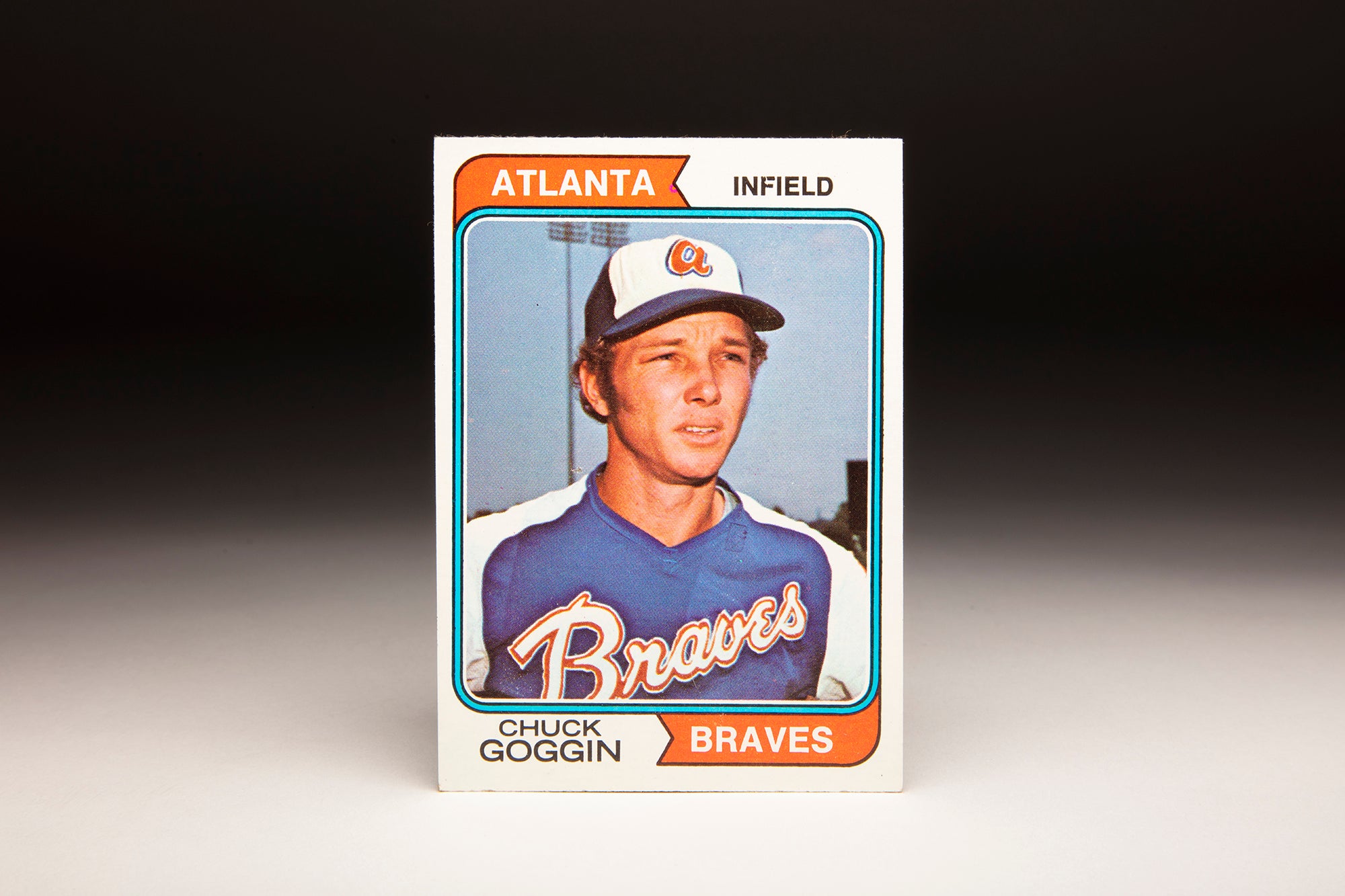
#CardCorner: 1974 Topps Chuck Goggin
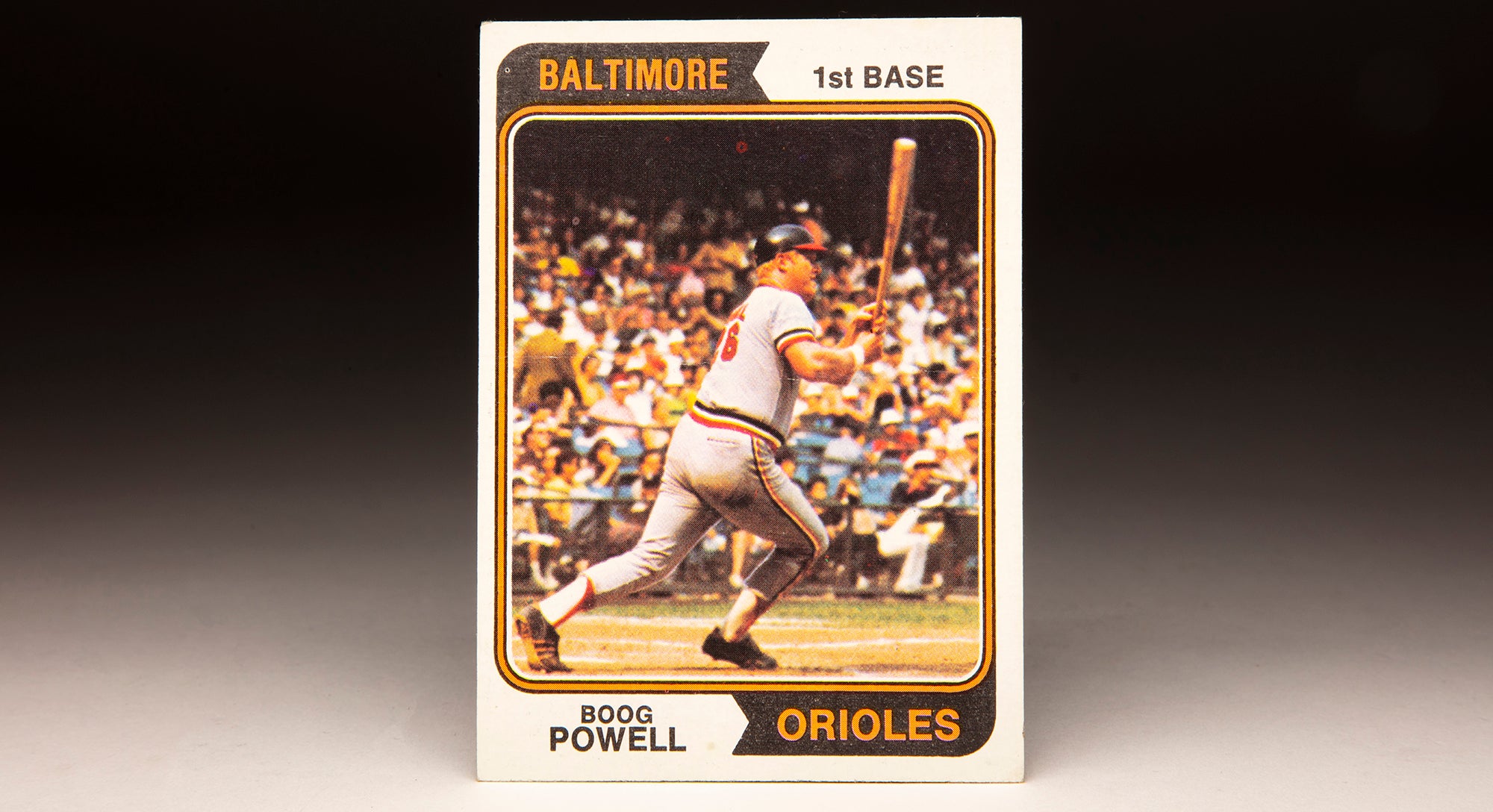
#CardCorner: 1974 Topps Boog Powell

#CardCorner: 1974 Topps Chuck Goggin


